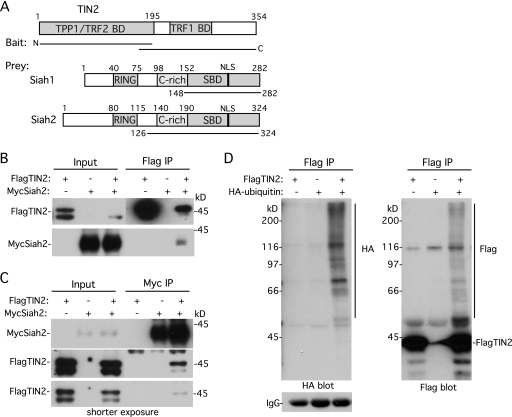Fig 1.
TIN2 binds Siah and is ubiquitylated in vivo. (A) Schematic representation of TIN2, with the TPP1, TRF2, and TRF1 binding domains (BD) indicated and Siah1 and Siah2 and the RING domain, cysteine-rich (C-rich) domain, substrate-binding domain (SBD), and nuclear localization signal (NLS) indicated. The lines indicate the TIN2 baits and Siah prey. (B and C) TIN2 binds Siah2 in human cells. HeLaI.2.11 cells were transfected with FlagTIN2 and/or MycSiah2. Cell lysates were immunoprecipitated (IP) with anti-Flag (B) or anti-Myc (C) beads and analyzed by immunoblotting with anti-Myc or anti-Flag antibody. (D) TIN2 is ubiquitylated in vivo. HeLaI.2.11 cells were transfected for 16 h with FlagTIN2 and/or HA-ubiquitin. Cell lysates were immunoprecipitated with anti-Flag beads and analyzed by immunoblotting with anti-HA antibody (left panel) or anti-Flag antibody (right panel).

